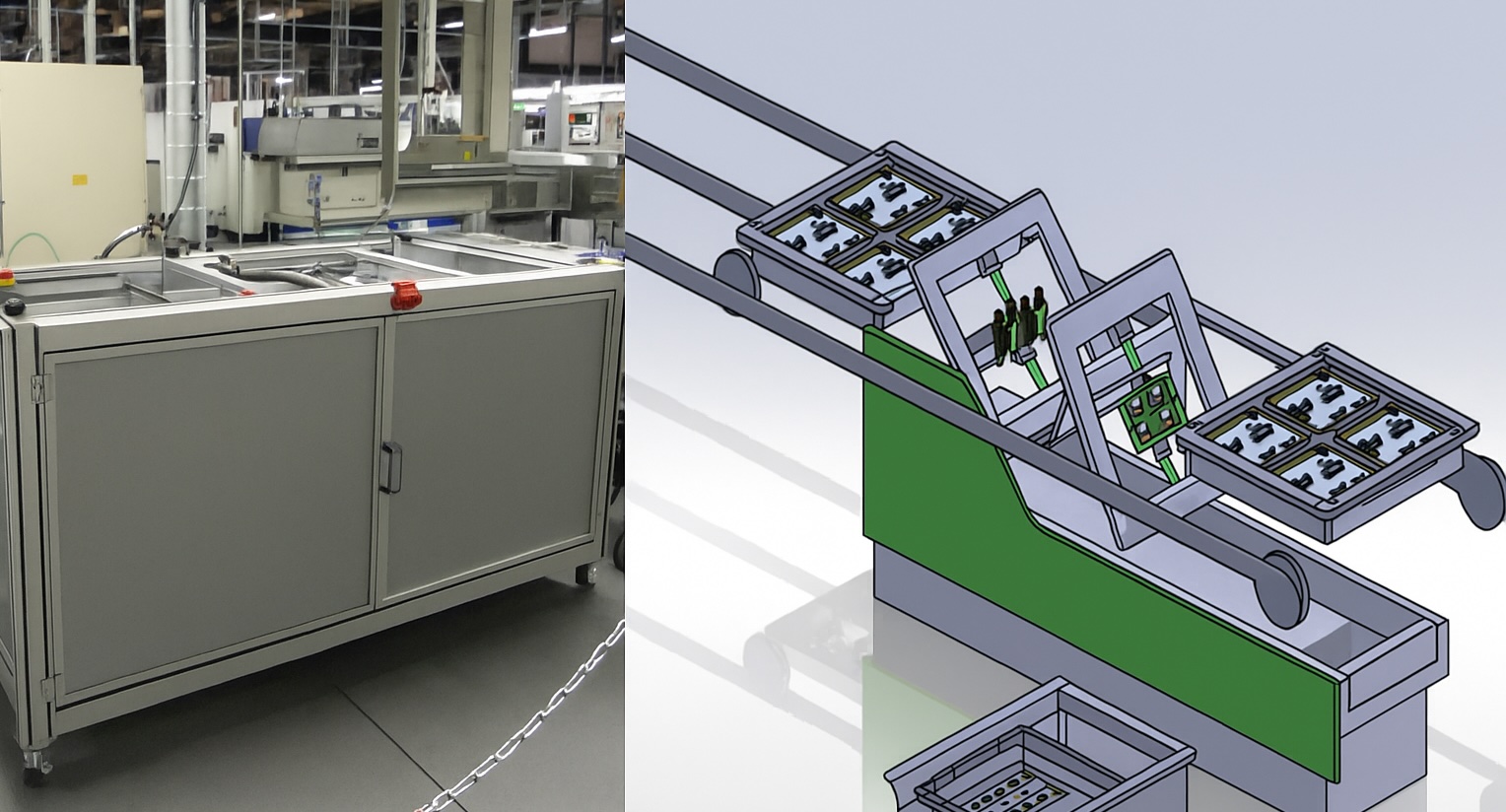High-Volume Conformal Coating Dipping Systems
Precision dip coating with controlled film build and maximum throughput
High-Volume Conformal Coating Dipping Systems go far beyond generic dip tanks — SCH engineers them as turnkey solutions built for precision, repeatability, and scale. These systems combine dipping, curing, handling, and advanced material control in a single integrated platform, delivering consistent film builds, reducing waste, and ensuring full compliance with international standards.

Why Choose SCH High-Volume Conformal Coating Systems?
SCH engineers every dipping system for precise control and repeatability. Unlike basic tanks, our turnkey solutions let you program, monitor, and validate every stage of the coating process.
- ✅ Maximum Throughput – Automated handling for continuous PCB production
- ✅ Precision Motion Control – Programmable immersion depth, dwell, withdrawal speed, and drain angle
- ✅ Advanced Material Management – Automated dosing, viscosity monitoring, and material top-up systems
- ✅ Temperature Stability – Optional material heating and conditioning modules to keep coatings within tolerance
- ✅ Flexible Chemistry – Compatible with solvent, silicone, acrylic, urethane, and UV-curable coatings
- ✅ Turnkey Integration – Inline curing, conveyors, carriers, and data collection all built into one system
- ✅ Safety Built-In – CE-certified, ATEX-rated options, fire suppression, and extraction control
SCH dipping systems have proven performance in aerospace, automotive, defence, and industrial electronics—trusted wherever coating quality and compliance cannot be compromised.
Learn more about controlling conformal coating dipping and process controls at our knowledge hub.
Tailored Turnkey Configurations
Each SCH system is built to order. We integrate the right combination of modules and controls to deliver a complete turnkey solution matched to your takt time, throughput, and quality targets.
Typical system options include:
- Dip Tanks – Single or multiple tanks for continuous coating runs
- Programmable Motion – Immersion, dwell, withdrawal, and drain profiles tailored for each coating
- Inline Curing Modules – Infrared, convection, or UV curing options
- Custom PCB Carriers & Loaders – Built for your board size, weight, and handling needs
- SMEMA-Compatible Conveyors – For seamless integration into existing lines
- Viscosity & Dosing Control – Real-time monitoring, automatic dosing, and top-up for consistency
- Material Temperature Control – Heating/cooling to maintain stability in production environments
- Process Intelligence – PLC/PC-based control, barcode scanning, and full data logging
- Environmental & Safety Controls – Extraction, air balancing, and low-level material sensors
Understand why controlling viscosity with conformal coating ensures consistent film build and coverage.
Conformal Coating Training Programme
Develop expertise in inline dip coating: conveyor handling, immersion profiles, dwell/withdraw programming, viscosity control, inline curing, masking for throughput, and process validation.
The programme is modular, IPC-aligned, and tailored for continuous, high-volume environments. It can also be extended to cover wider conformal coating processes, masking, inspection, and rework across other equipment types.
The SCH Advantage
Because SCH not only builds but also uses these systems in our own coating services, we understand the importance of maintaining stable viscosity, dosing accuracy, and material temperature for process reliability. These features aren’t optional extras — they’re what make high-volume coating consistent, traceable, and cost-effective.
When you choose SCH, you get more than equipment. You gain a fully integrated, turnkey conformal coating system designed around your process, your chemistry, and your production goals.
FAQs – High-Volume Conformal Coating Dipping Systems
How is coating thickness controlled?
Immersion speed, dwell time, withdrawal rate, and drain angle directly control coating thickness. Operators program these parameters for repeatable builds.
Can systems handle silicone and UV coatings?
Yes. SCH systems run all major conformal coating chemistries, including silicones and UV-curables.
How is viscosity maintained?
Automatic viscosity control and top-up actively maintain coating stability, minimising defects and downtime.
Find out more about the reasons for using viscosity control in a dip system.
Can curing be integrated?
Yes. Systems integrate inline infrared, convection, or UV curing for end-to-end processing.
Can tank capacity be customised?
Yes. SCH designs and builds dip tanks to match your PCB formats, production volumes, and coating types.
Useful Links
Why Choose SCH Services?
Partnering with SCH Services means more than just outsourcing — you gain a complete, integrated platform for
Conformal Coating, Parylene & ProShieldESD Solutions, alongside equipment, materials, and training, all backed by decades of hands-on expertise.
- ✈️ 25+ Years of Expertise – Specialists in coating technologies trusted by aerospace, medical, defence, automotive, and electronics industries worldwide.
- 🛠️ End-to-End Support – Guidance on coating selection, Parylene grades, masking strategies, application methods, inspection, and ProShieldESD integration.
- 📈 Scalable Solutions – From small prototype batches to full-scale, high-volume production, SCH delivers flexible capacity that grows with your needs.
- 🌍 Global Reach – Responsive technical support and supply coverage across Europe, North America, and Asia.
- ✅ Proven Reliability – A strong reputation built on quality, consistency, and customer satisfaction across services, equipment, and materials.
📞 Call: +44 (0)1226 249019
✉ Email: sales@schservices.com
💬 Contact Us ›

